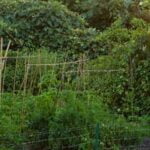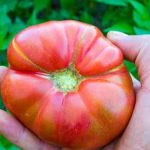Are you ready to take your gardening skills to the next level? In this comprehensive guide, we will explore the ins and outs of vegetable gardening in the sunshine state.
From understanding the unique climate and soil conditions to choosing the right vegetables for Florida’s growing season, we will cover everything you need to know to create a thriving vegetable garden. Whether you’re a seasoned gardener or just starting out, The Florida Vegetable Gardening Guide is your go-to resource for cultivating a bountiful and delicious garden.
Florida is known for its warm weather and abundant sunshine, making it an ideal environment for growing a wide variety of vegetables. However, navigating the specific nuances of the Florida climate and soil can be a challenge for even experienced gardeners. That’s why we’ve put together this guide to help you harness the full potential of your garden.
With expert tips on preparing the soil, best practices for planting and caring for vegetables, dealing with common pests and diseases, and maintaining your garden through proper watering techniques, this guide has everything you need to succeed. So grab your gardening gloves and get ready to dig in – it’s time to unlock the secrets of successful vegetable gardening in Florida.
Understanding the Florida Climate and Soil for Vegetable Gardening
When it comes to vegetable gardening in Florida, understanding the state’s unique climate and soil is crucial for a successful harvest. Florida’s climate can be divided into two main regions: the northern region, which experiences a more temperate climate, and the southern region, which has a tropical climate. The state also has different soil types, including sandy soil, muck soil, and sandy loam.
The key to successful vegetable gardening in Florida is choosing crops that thrive in the state’s warm and humid climate. Some vegetables that do well in Florida include tomatoes, peppers, squash, cucumbers, and sweet potatoes. It’s important to select varieties that are heat – and disease-resistant to ensure a bountiful harvest.
In addition to understanding the climate and soil, it’s also important to consider the growing seasons in Florida. The state has two main growing seasons: fall/winter and spring/summer.
Understanding these growing seasons will help you plan your vegetable garden and maximize your yield throughout the year. The Florida Vegetable Gardening Guide provides valuable information on which vegetables are best suited for each growing season, as well as tips for extending the growing season through proper care and maintenance.
| Climate Region | Main Soil Types |
|---|---|
| Northern Region: Temperate | Sandy Loam |
| Southern Region: Tropical | Sandy Soil, Muck Soil |
Choosing the Right Vegetables for Florida’s Growing Season
When it comes to choosing the right vegetables for Florida’s growing season, it’s important to consider the unique climate and soil conditions of the state. By selecting vegetables that thrive in these conditions, you can increase your chances of a successful harvest. The Florida Vegetable Gardening Guide provides helpful recommendations for vegetables that are well-suited for Florida’s climate and can withstand its hot and humid summers.
Here are some top vegetable choices for Florida’s growing season:
- Tomatoes – Tomatoes are a popular choice for Florida gardens due to their versatility and ability to withstand the heat.
- Peppers – Both sweet and hot peppers thrive in Florida’s warm climate, making them an excellent choice for home gardeners.
- Squash – Varieties such as zucchini and yellow squash do well in Florida’s growing season, producing abundant harvests throughout the summer.
- Okra – This heat-tolerant vegetable is well-suited for Florida’s climate and is a staple in many Southern gardens.
It’s also important to consider planting times for each vegetable, as some may be better suited for planting in the spring or fall. Additionally, understanding the specific needs of each vegetable, such as sun exposure and watering requirements, will contribute to a successful harvest. By choosing the right vegetables tailored to Florida’s growing season, you can set yourself up for a bountiful garden.
In addition to these recommendations, The Florida Vegetable Gardening Guide offers valuable insights into when and how to plant different varieties of vegetables, helping gardeners make informed decisions about which plants will thrive in their gardens. It also provides information on optimal planting dates, spacing requirements, and best practices for caring for each type of vegetable throughout the growing season.
With this comprehensive resource at your fingertips, you can confidently choose the right vegetables for your Florida garden and enjoy a successful harvest.
Preparing the Soil for a Successful Vegetable Garden
When it comes to successful vegetable gardening in Florida, one of the most crucial steps is preparing the soil. The sandy soils found in much of Florida can be challenging for growing vegetables, but with the right preparation, it is possible to create a thriving garden.
One important consideration is adding organic matter to the soil, such as compost or well-rotted manure. This helps improve the soil structure and fertility, making it more suitable for growing a wide variety of vegetables.
Another key aspect of preparing the soil for a successful vegetable garden in Florida is ensuring proper drainage. Because of Florida’s frequent heavy rains, poorly drained soil can lead to waterlogged roots and issues with plant health. Adding organic matter can also help improve drainage, as can raised beds or mounds, which provide better aeration and drainage for the plants.
It’s also important to conduct a soil test before planting your vegetable garden in Florida. This will help you understand the nutrient levels and pH balance of your soil, allowing you to make any necessary amendments before planting. Many county extension offices in Florida offer affordable or free soil testing services, providing valuable information to help you achieve success with your vegetable garden.
| Aspect | Detail |
|---|---|
| Organic Matter | Adding compost or well-rotted manure improves soil structure and fertility. |
| Drainage | Poorly drained soil can lead to waterlogged roots; consider raised beds or mounds for better drainage. |
| Soil Testing | A pre-planting soil test can help determine necessary amendments for optimal growth. |
Best Practices for Planting and Caring for Vegetables in Florida
Planting and caring for vegetables in Florida requires specific knowledge and attention to detail due to the state’s unique climate and soil conditions. Here are some best practices to follow when cultivating a vegetable garden in Florida:
- Choose the right planting dates: It’s important to plant vegetables at the right time in order to maximize their growth and yield. Consult the Florida Vegetable Gardening Guide or a local agricultural extension office for recommended planting dates based on your specific location within the state.
- Select appropriate varieties: Not all vegetable varieties thrive in Florida’s climate. Be sure to choose heat-tolerant and disease-resistant varieties that are well-suited for the warm and humid conditions of the region.
- Provide adequate sun and water: Most vegetables need full sun to grow, so it’s essential to place your garden in an area that receives at least 6-8 hours of sunlight per day. In addition, consistent watering is crucial, especially during hot, dry periods.
In addition to these best practices, it’s important to pay attention to proper spacing, mulching, fertilizing, and regular maintenance of your vegetable garden. By following these guidelines, you can ensure that your plants have the best chance of thriving in a Florida environment.
Dealing With Common Pests and Diseases in Florida Vegetable Gardens
When growing vegetables in Florida, it’s essential to be proactive in preventing and managing common pests and diseases that can affect your garden. Due to the state’s warm and humid climate, these issues can quickly become problematic if not addressed effectively. Here are some tips for dealing with common pests and diseases in Florida vegetable gardens:
- Practice crop rotation: Rotating crops each season can help prevent a buildup of pests and diseases in the soil. This method disrupts their life cycles and reduces their ability to infest plants.
- Monitor regularly: Keep a close eye on your plants for signs of pest infestations or disease symptoms. Early detection allows for prompt action before problems escalate.
- Implement natural pest control methods: Consider using natural predators, such as ladybugs or praying mantises, to manage insect pests. Additionally, utilizing organic pesticides or insecticidal soaps can help keep pests at bay without harming beneficial insects.
By being vigilant and taking proactive measures against common pests and diseases, you can protect your vegetable garden from potential damage.
For more information on managing specific pests and diseases prevalent in Florida vegetable gardens, refer to resources like the University of Florida IFAS Extension website or reach out to local gardening experts for guidance.
Dealing With Common Pests and Diseases in Florida Vegetable Gardens
Identifying Common Pests and Diseases
One of the biggest challenges that Florida vegetable gardeners face is dealing with common pests and diseases that can wreak havoc on their crops. Some of the most prevalent pests in Florida gardens include aphids, cutworms, and whiteflies, while common diseases include powdery mildew, root rot, and bacterial leaf spot.
It’s important for gardeners to be able to identify these pests and diseases early on so that they can take appropriate action to prevent them from causing extensive damage to their crops.
Natural Pest Control Methods
In order to maintain a healthy and thriving vegetable garden in Florida, it’s important to utilize natural pest control methods whenever possible. This not only helps to avoid the use of harmful chemicals, but also promotes a more sustainable and environmentally-friendly approach to gardening. For example, introducing beneficial insects such as ladybugs and lacewings can help control aphid populations, while companion planting certain vegetables with natural pest-repellent properties can help deter harmful insects.
Disease Prevention Strategies
Preventing diseases in a Florida vegetable garden requires proactive measures such as practicing crop rotation, proper spacing between plants for adequate air circulation, and ensuring that the soil has good drainage. Additionally, using disease-resistant varieties of vegetables can greatly reduce the risk of encountering common plant diseases. Taking these preventative measures can go a long way in maintaining a healthy and disease-free vegetable garden throughout the growing season.
By being proactive in identifying potential threats from pests and diseases, utilizing natural pest control methods, and implementing disease prevention strategies, Florida vegetable gardeners can increase their chances of enjoying a bountiful harvest of fresh and healthy produce from their gardens. Keeping a close eye on plants for early signs of trouble while implementing these approaches will contribute to successful vegetable gardening outcomes as outlined in the florida vegetable gardening guide.
Tips for Watering and Maintaining a Vegetable Garden in Florida
After carefully selecting the right vegetables for your Florida garden and preparing the soil, the next crucial step is to ensure proper watering and maintenance. The unique climate of Florida can present challenges when it comes to keeping a vegetable garden thriving, but with the right techniques, you can achieve success.
Understanding Florida’s Climate and Water Needs
Florida’s climate is characterized by hot, humid summers and mild winters. This means that during the summer months, it is essential to ensure that your vegetable garden receives an adequate amount of water to combat the heat and prevent dehydration. On the other hand, during the winter, you may need to adjust your watering schedule as the cooler temperatures typically result in lower water requirements for most vegetables.
It’s important to consider factors such as rainfall patterns, humidity levels, and temperature fluctuations when determining your watering schedule. In addition, the type of soil in your garden can also impact water retention, so be sure to factor this into your watering routine.
Watering Techniques for a Florida Vegetable Garden
One effective way to maintain moisture in your vegetable garden is through mulching. Organic mulch such as straw or wood chips can help retain water in the soil while also suppressing weeds and improving soil health. Drip irrigation systems are another popular option for Florida gardens as they deliver water directly to the base of plants, minimizing evaporation and waste.
When it comes to timing, it’s best to water in the early morning or late afternoon to reduce evaporation and allow plants to absorb moisture more effectively. Regular monitoring of soil moisture levels is also key – using a moisture meter can help you determine when it’s time to water your vegetables.
By implementing these watering techniques and staying attuned to Florida’s unique climate and water needs, you can help ensure that your vegetable garden thrives throughout the growing season. Following these tips will lead you towards success with “the florida vegetable gardening guide“.
Harvesting and Enjoying the Fruits of Your Labor
In conclusion, the Florida Vegetable Gardening Guide provides valuable information and tips for anyone looking to start their own vegetable garden in the Sunshine State. By understanding the unique climate and soil conditions of Florida, gardeners can make informed decisions about which vegetables to grow and how to care for them. This guide emphasizes the importance of proper soil preparation, planting techniques, and ongoing maintenance to ensure a successful harvest.
One key takeaway from the Florida Vegetable Gardening Guide is the emphasis on sustainable and environmentally friendly practices. By utilizing natural methods for pest control and efficient watering strategies, gardeners can reduce their impact on the environment while still enjoying a bountiful harvest of fresh, homegrown produce. Additionally, by sharing success stories from other Florida vegetable gardeners, this guide inspires readers with real-life examples of how dedication and hard work can lead to a thriving garden.
Aspiring vegetable gardeners in Florida can use the information in this guide as a starting point for their gardening journey. Whether they have limited experience or are seasoned gardeners looking for specific advice for Florida’s climate, this comprehensive resource offers practical guidance for growing a variety of vegetables. By following the recommendations outlined in The Florida Vegetable Gardening Guide, individuals can look forward to enjoying delicious, healthy produce straight from their own backyard.
Frequently Asked Questions
What Is the Best Month to Plant Vegetables in Florida?
The best month to plant vegetables in Florida is dependent on the specific region within the state. Generally, for most areas, late February through April is the ideal time due to the warmer temperatures and minimal risk of frost.
What Vegetables Grows Best in Florida?
Several vegetables grow best in Florida’s climate, including tomatoes, peppers, squash, cucumbers, and sweet potatoes. These warm-season crops thrive in the hot and humid conditions that are common in the state.
Is Fertilizer Necessary for Florida Vegetable Gardens?
Fertilizer is necessary for Florida vegetable gardens to provide essential nutrients to the plants. Because of the sandy soil prevalent in many parts of Florida, fertilization is crucial to ensure that plants have access to the necessary nutrients for healthy growth and abundant yield.

If you’re looking to get into vegetable gardening, or are just looking for some tips on how to make your current garden better, then you’ve come to the right place! My name is Ethel and I have been gardening for years. In this blog, I’m going to share with you some of my best tips on how to create a successful vegetable garden.





